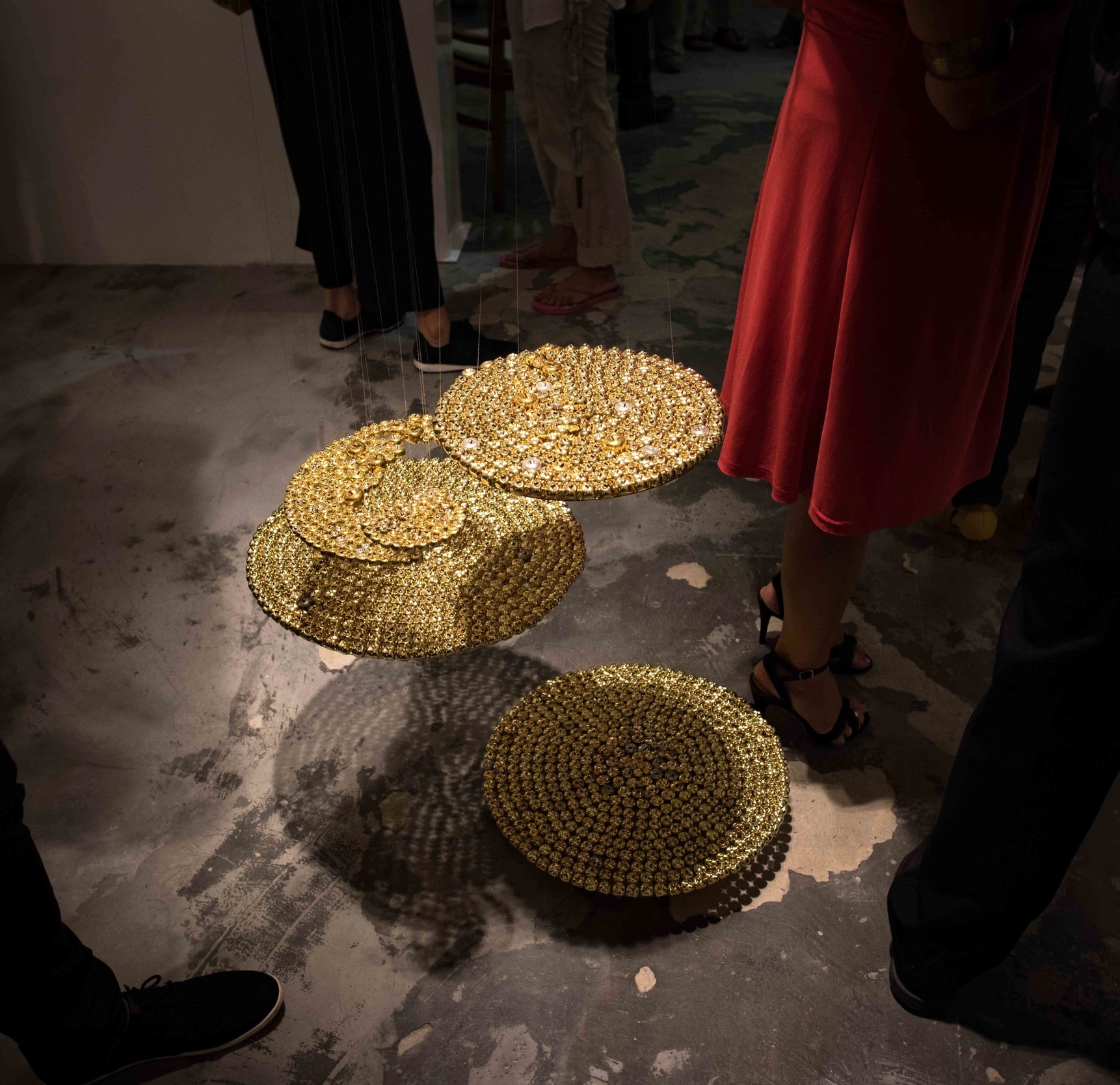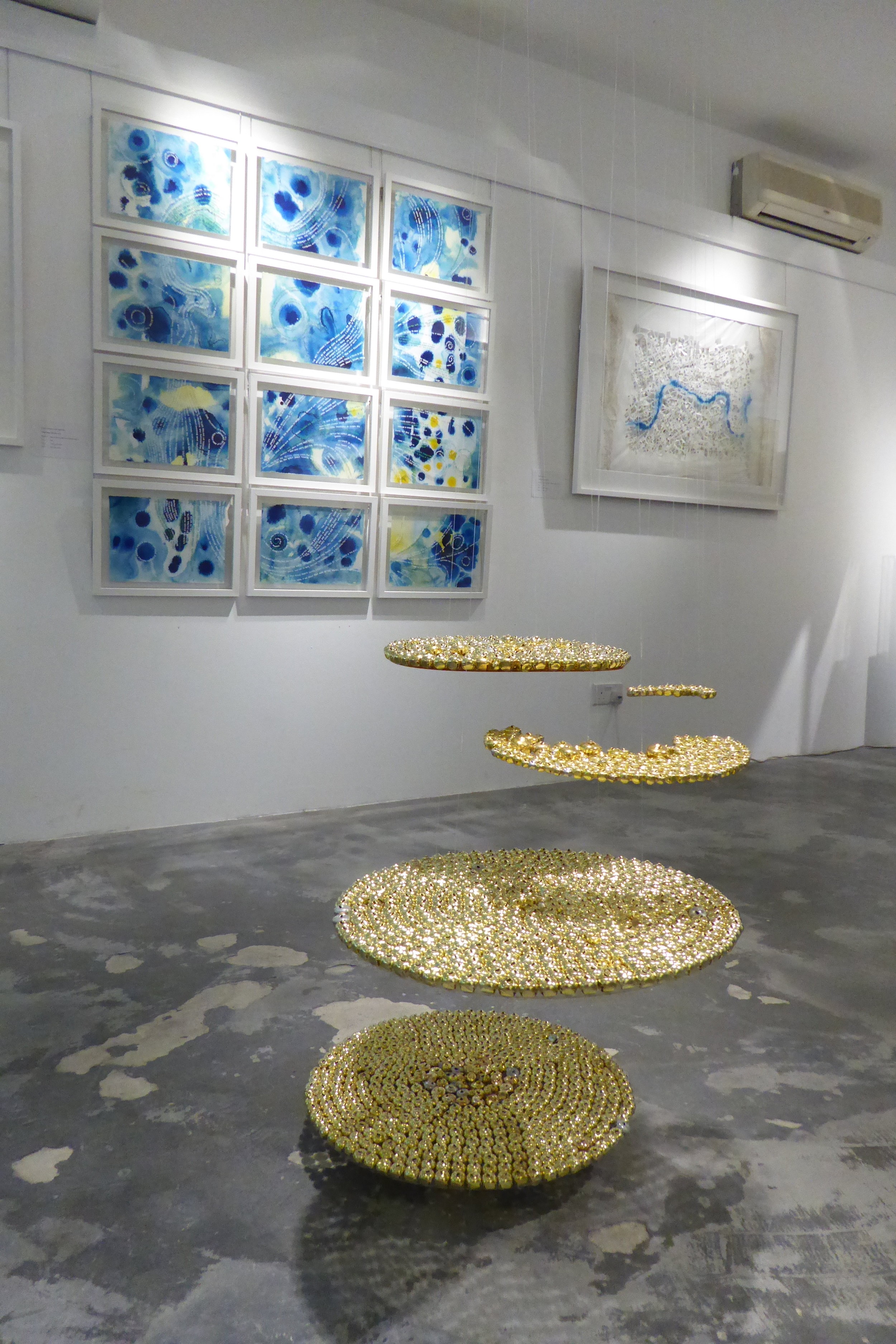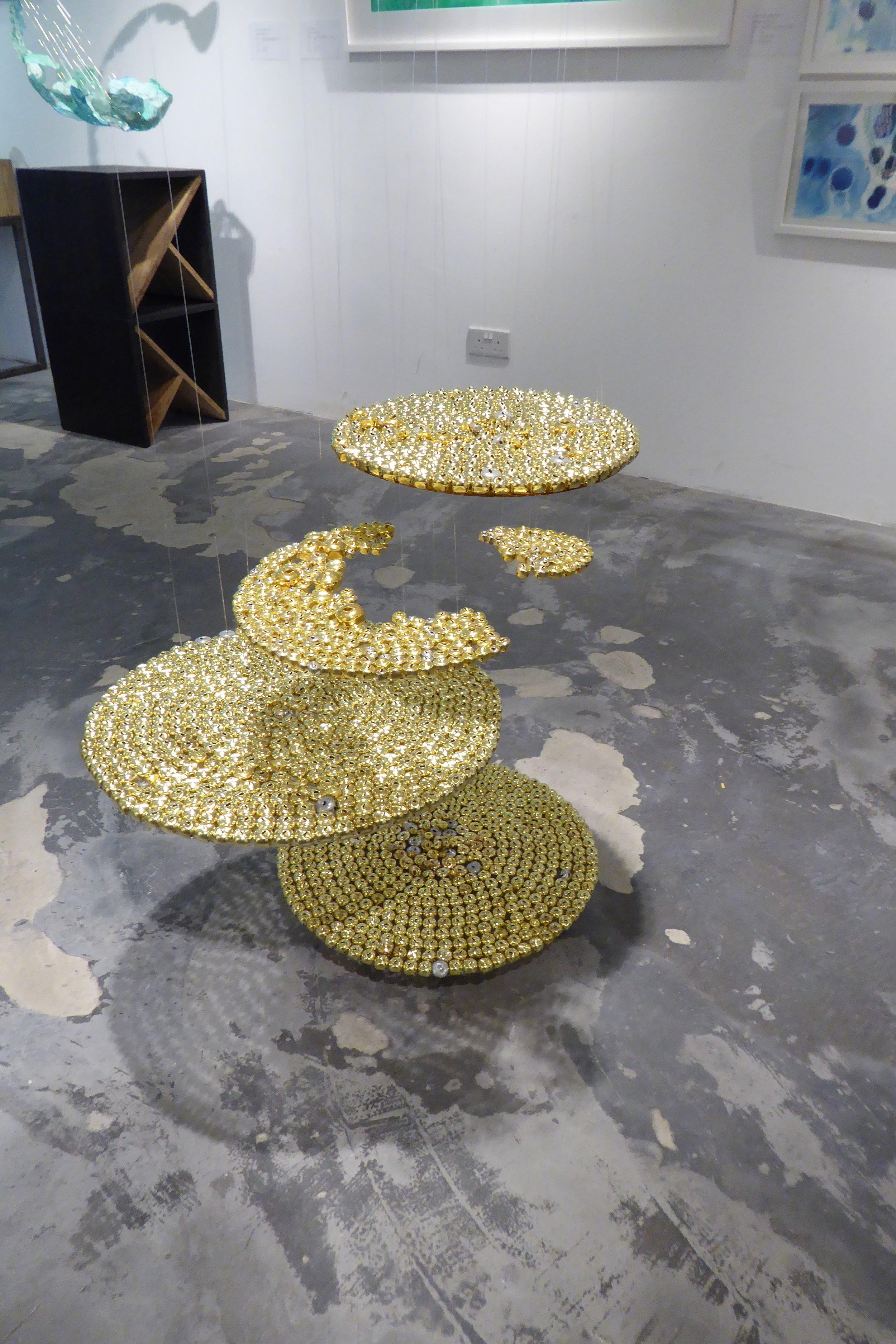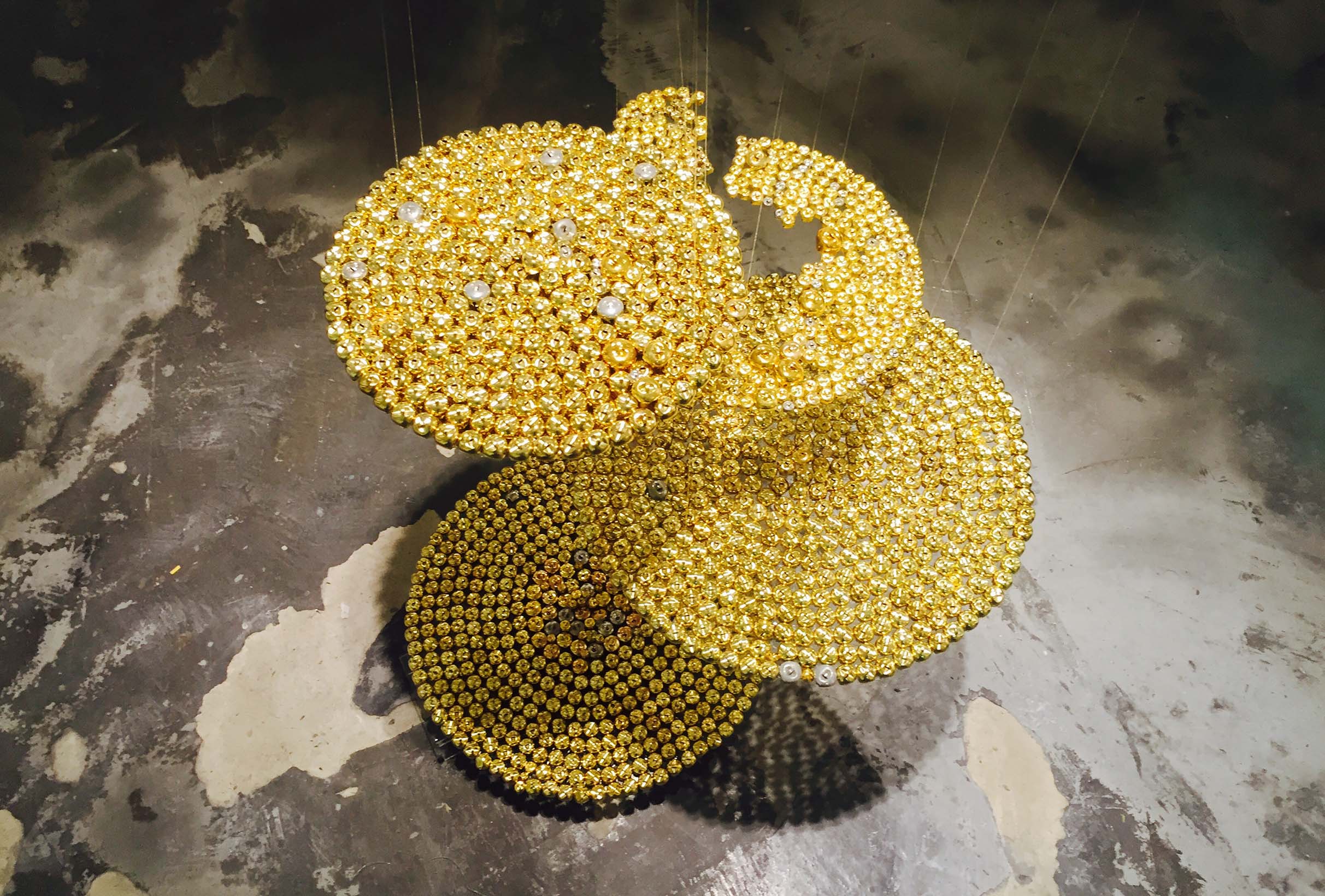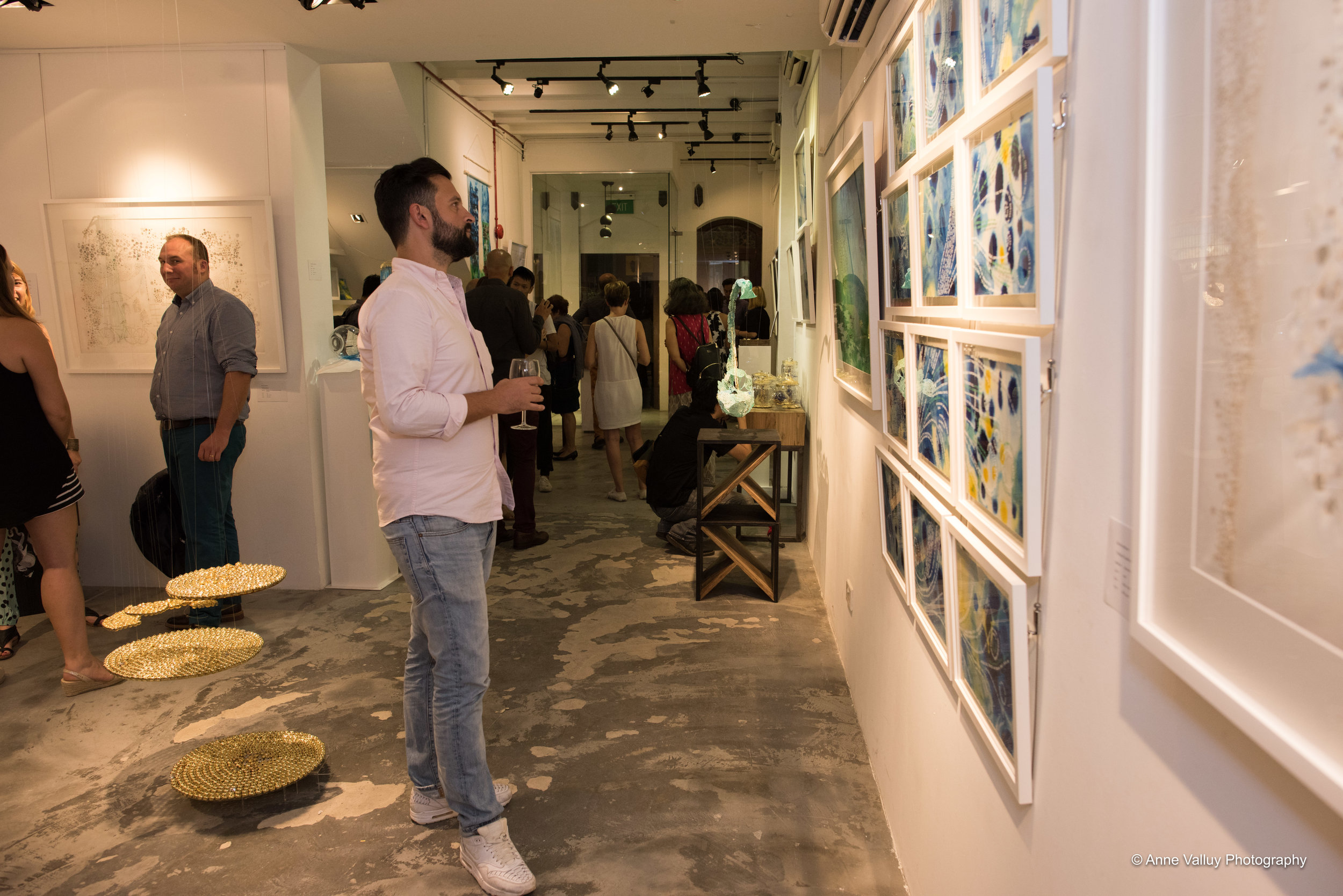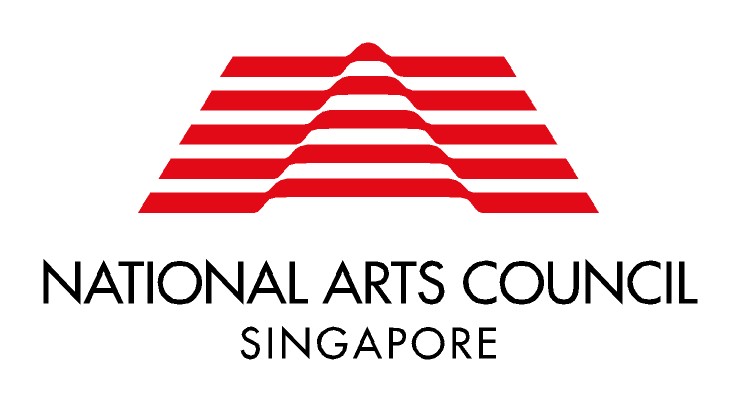Saung (Burmese Harp)
Nicola Anthony and Marc Nair, 2016
SINGAPORE, YANGON, LONDON
Title or copyright of images, code block, if needed
This artwork takes the form of a fractured and dislocated Burmese pagoda, representing a beautiful country with a complex and ruptured history of migration and conflict among ethnic groups.
Silenced bells, metal, mirror
Installation, size variable.

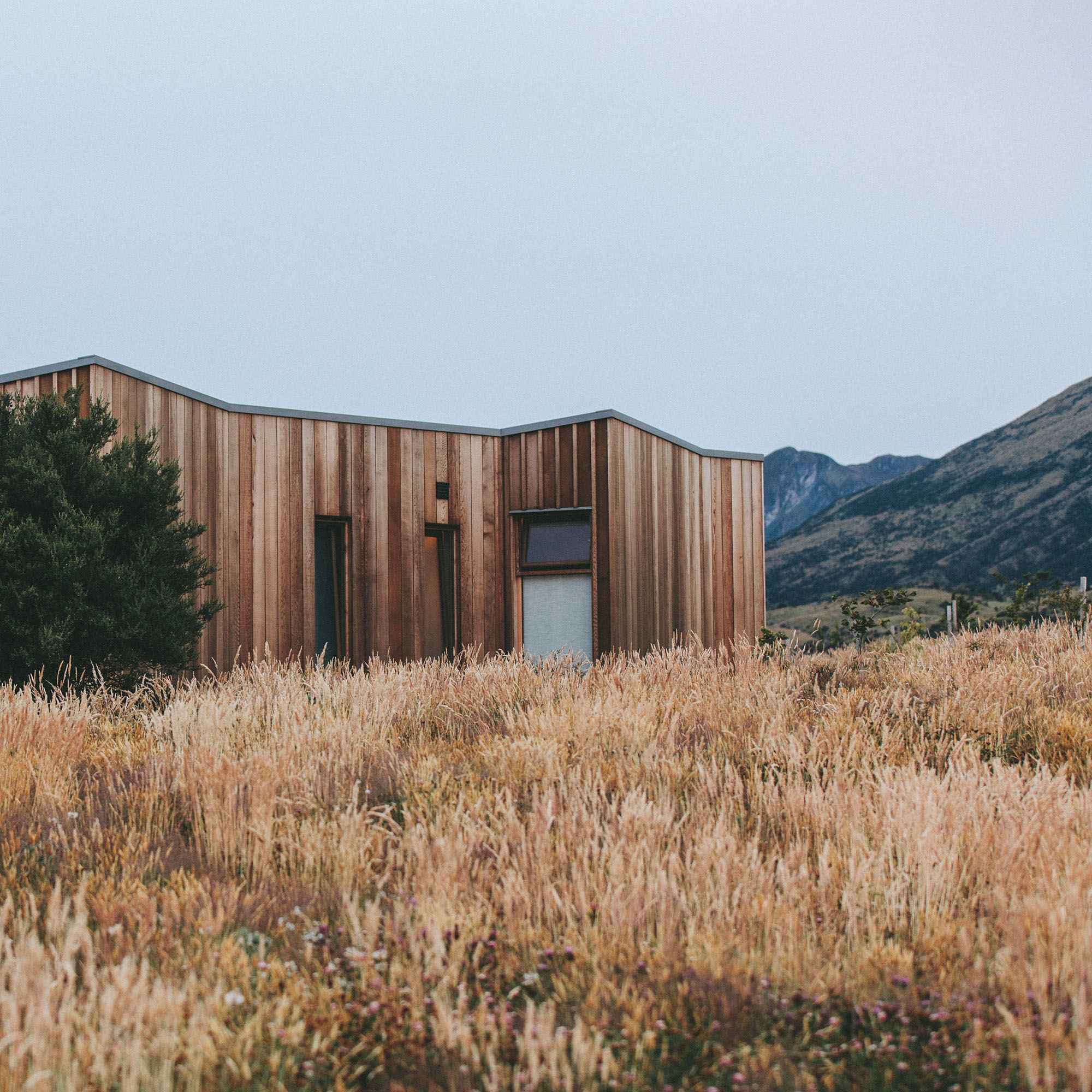
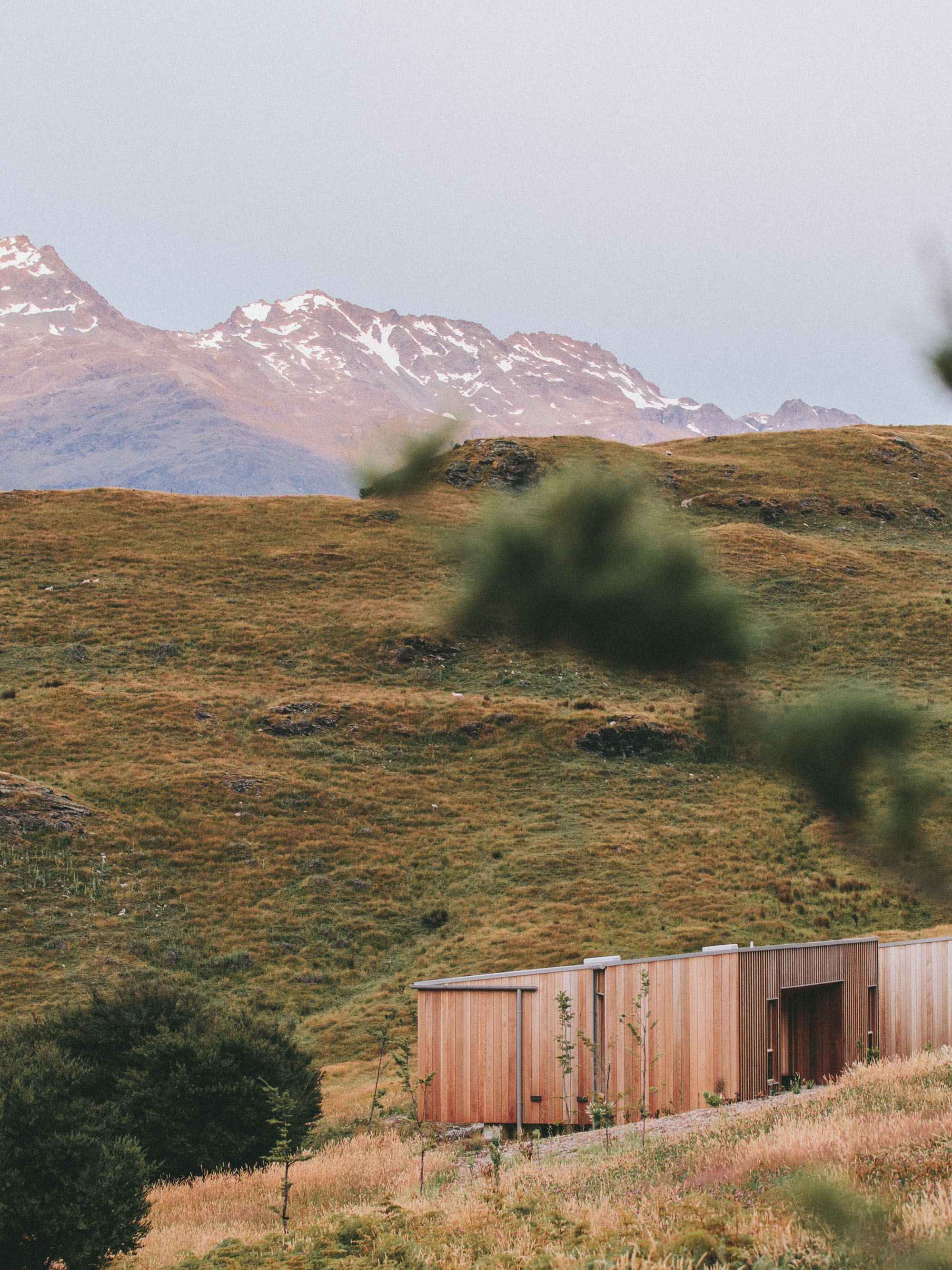

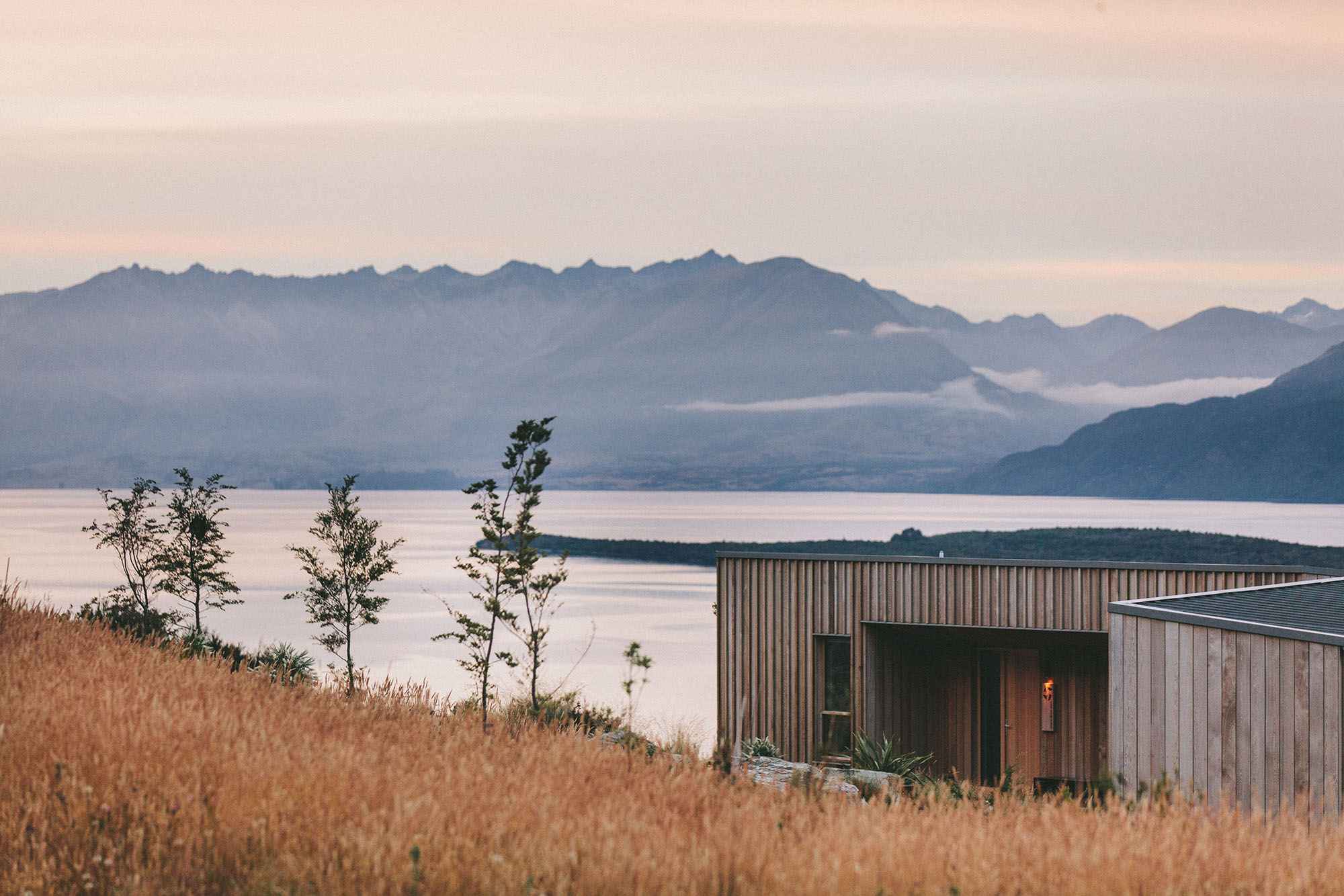
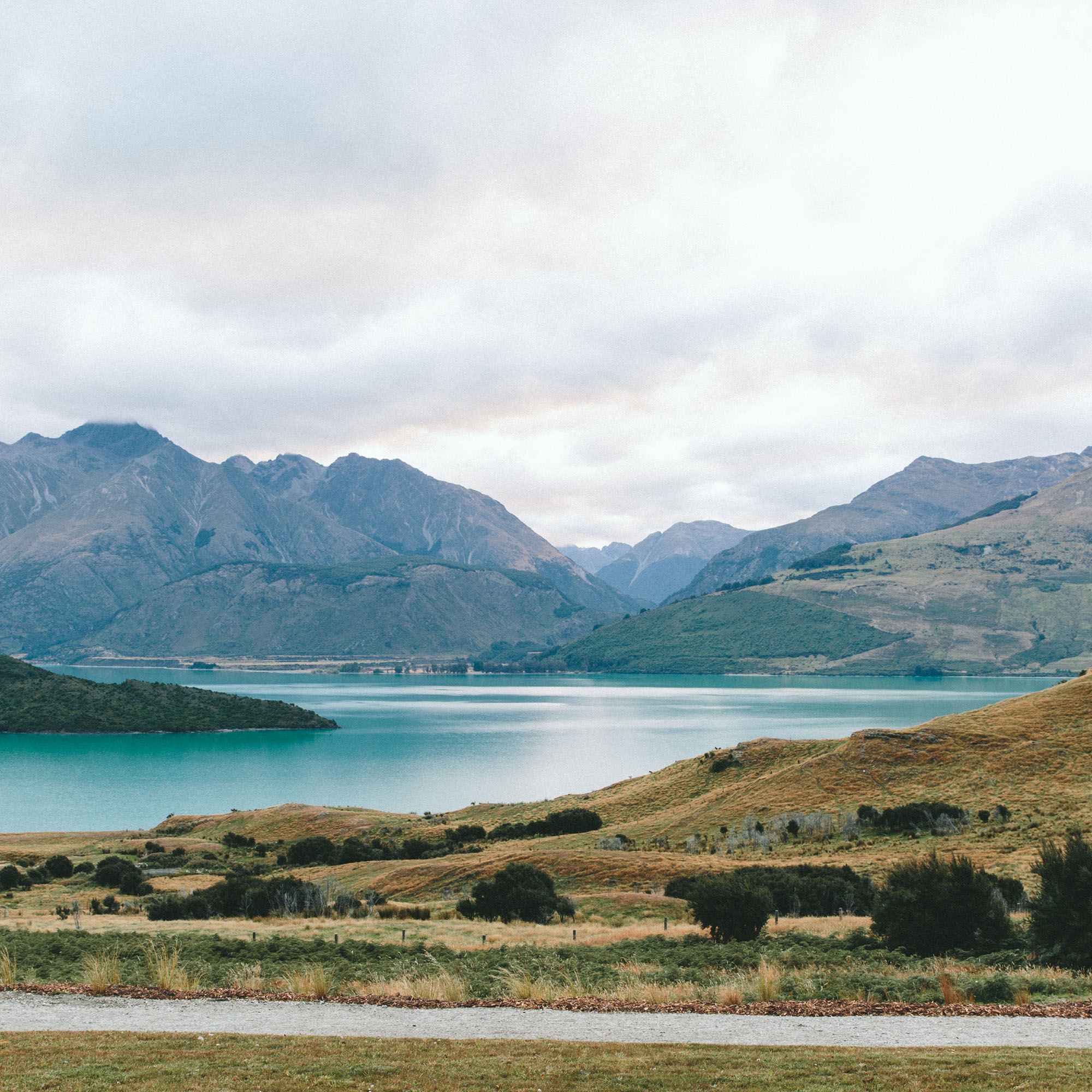
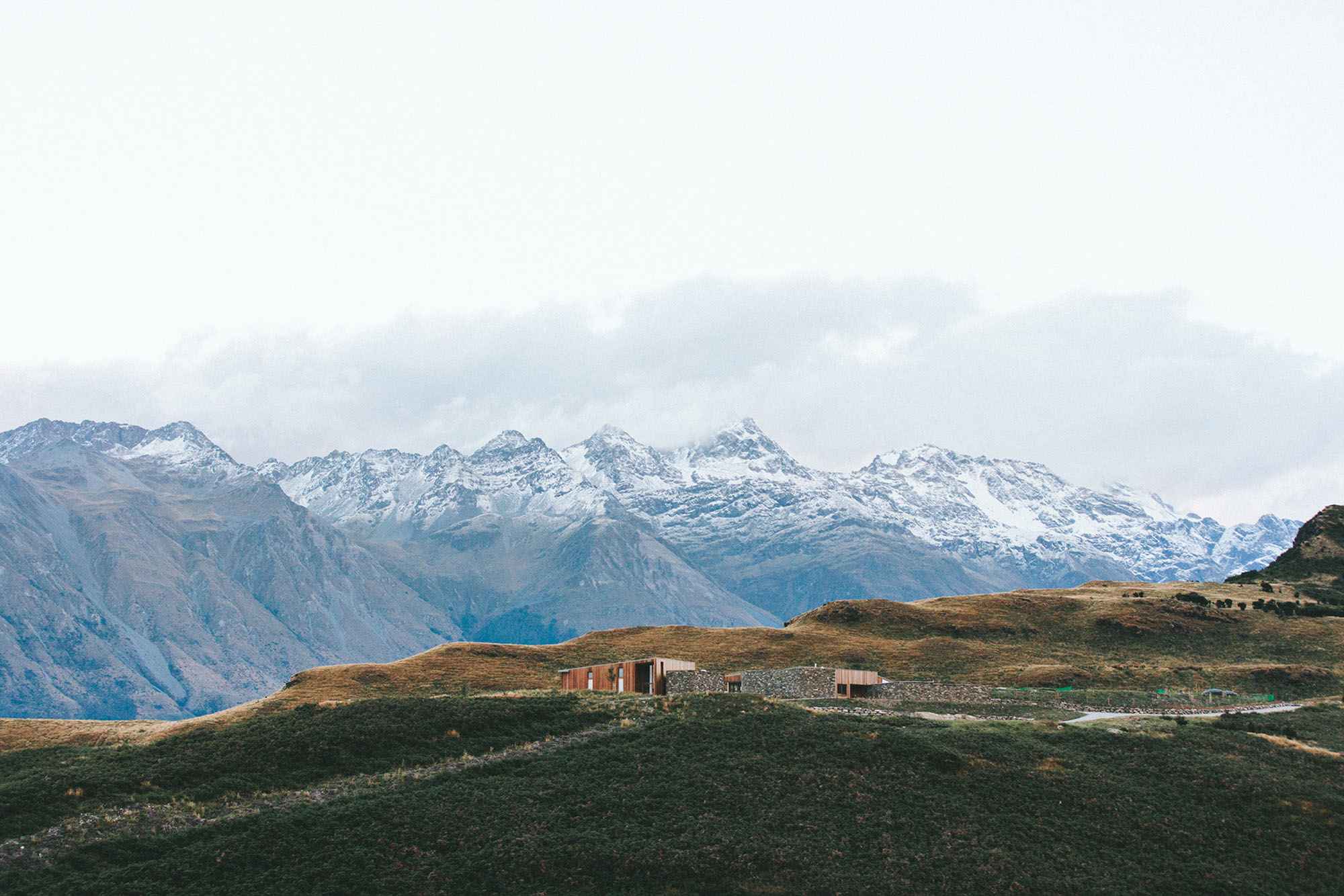
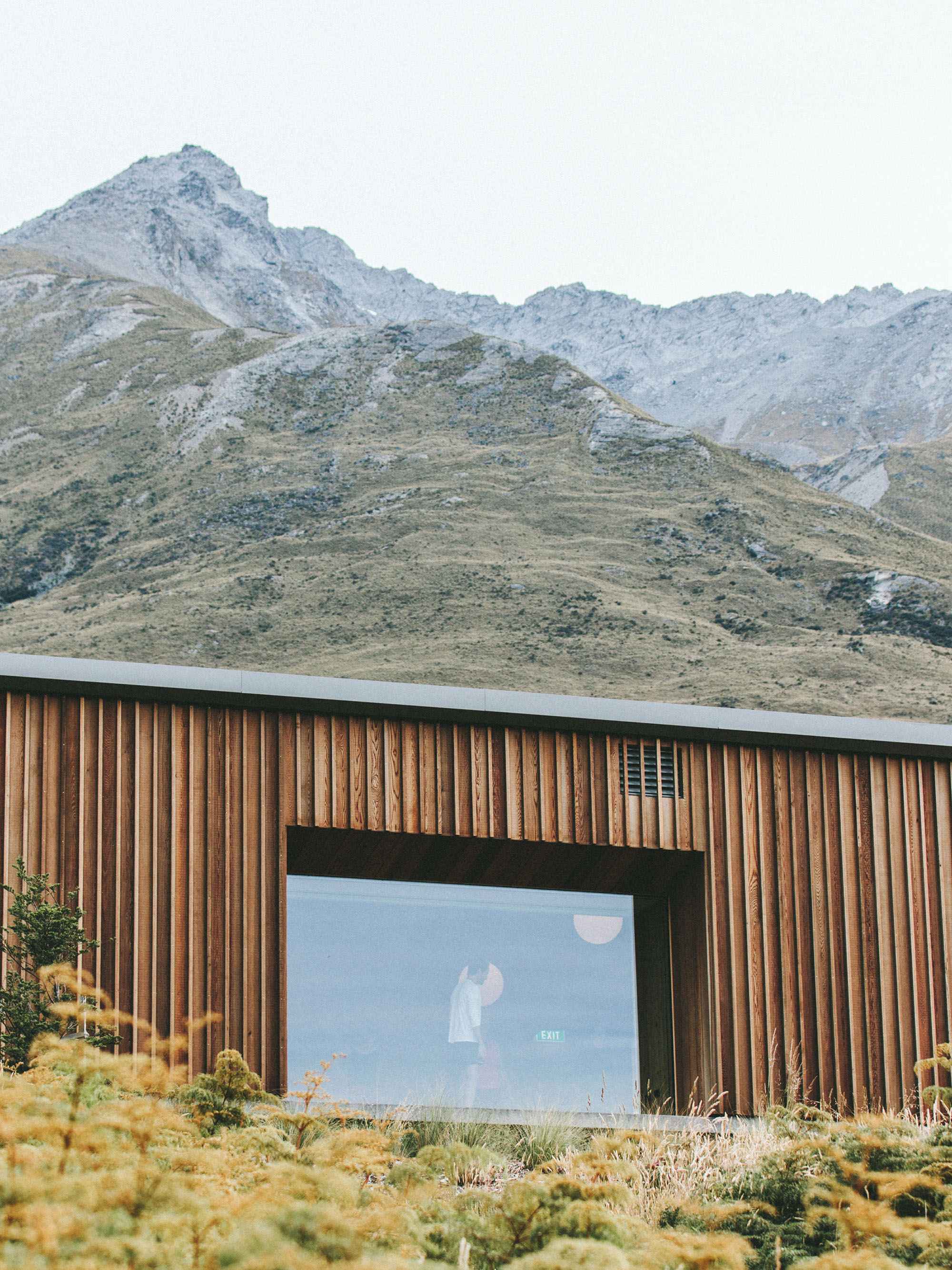




2017 saw an exodus of over 400,000 Muslim Rohingya from Myanmar, following what the UN called an ethnic cleansing by the army. What is seen internationally as a human rights issue is viewed in Myanmar as one of national sovereignty, due to misinformation on the ground and the military junta’s deep-rooted power.
Burmese pagodas have a bell-shaped stupa that consecrates relics, marking a sacred place. A spire connects the pinnacle to the ground, symbolising the axis-mundi. In Buddhism, the resonance of a bell signifies pure wisdom because the sound is one of harmony and clarity.
In Islam bells can be seen as the Devil’s instrument, said to prevent angels from entering a house. This symbolism originated from times of war, since a bell could indicate your position and lead enemies to you. Bells are generally accepted if they are used for practical purpose and not to make a melodious sound. In this sculpture, each of the 2000 bells has been silenced.
Under the oppressive and manipulative military leadership - which lasted until 2011 - Myanmar developed a history of communal mistrust. This unease has been exploited under the military rule.
Most Burmese are Buddhist, and they do not recognise the Rohingya as citizens. Clarity and harmony are currently hard to achieve due to misinformation in Myanmar as well as censorship and blocking of international journalists. Within the country, people believe the Rohingya are terrorists, setting their own villages on fire before fleeing to Bangladesh.
Whilst Buddhism is known as a peaceful religion, a visceral fear and resentment of Rohingya Muslims has grown. Myanmar’s society may always be cracked underneath.
Stupa was created as apart of the Intersection body of work. The first Intersection exhibition took place at Intersections Gallery, Kampong Glam, Singapore, who have been the kind supporters of this ambitious and complex project. Thanks go to the Singapore National Arts Council for their sponsorship of the project, and NPE Art Residency where Nicola produced most of the artworks, as well as publishers Knuckles and Notch who published the accompanying book.
The second exhibition of Intersection will take place in Yangon 2018.
Thank you to partners, sponsors and supporters:
